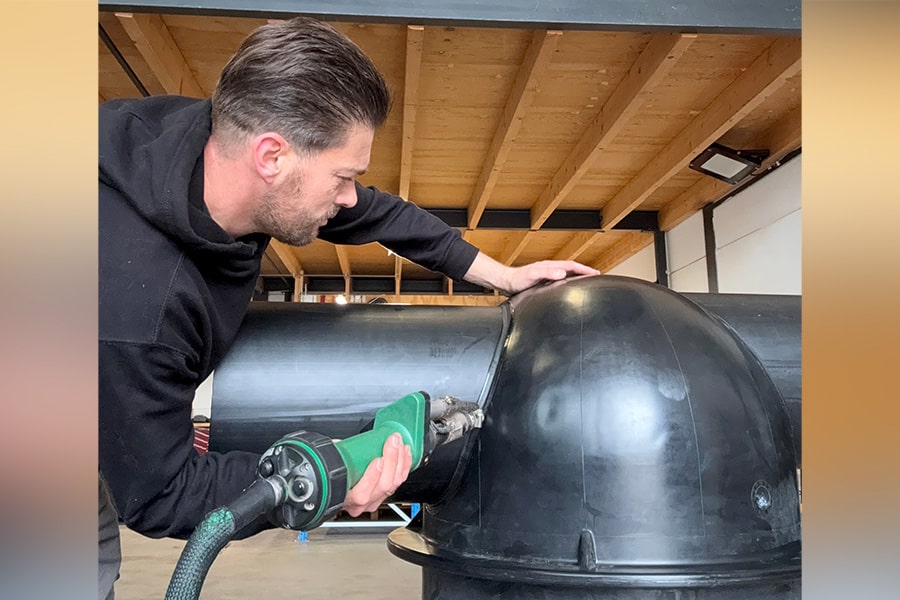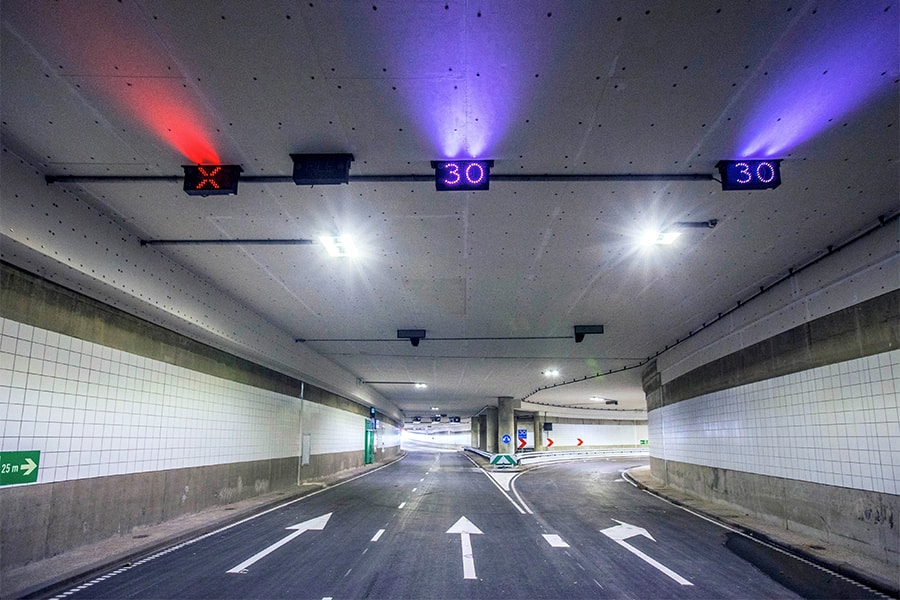
New proximity switch for sheet piling
When constructing earth retaining structures, it is important to install a continuous wall where there is no soil and water leaching. Such a wall usually consists of steel structures such as sheet pile walls or combi walls for the more heavily loaded walls. Steel sheet pile walls and combi walls are soil and watertight, except in the area of the ditches required to install and connect the elements in the subsurface. To ensure a continuous wall, all sheet piles (and pipes) must be connected in each other's locks. Because the locks are in the subsurface or under water, they are often not visually verifiable. With extremely heavy pile driving or if there are obstacles in the ground, there is a risk that the sheet piles will "run out of lock," resulting in possible excavation.
Whether a dam wall lock is connected in the previous lock during and after installation can be checked in several ways. The most reliable way of measuring is using electrical sensors, rather than the simplified form with mechanical detection. Within electrical sensors, a distinction can be made between a sensor with discontinuous measurement and a continuous measurement.
Discontinuous measurement method with Dixeran™
A discontinuous measurement method consists of a sensor that checks at one level that no slot opening has occurred. ArcelorMittal uses the Dixeran™ system for this purpose, which consists of a shear pin placed at the bottom of the leading slot of the sheet pile wall. In a combi wall, these sensors are installed in the slot of the tubular piles. This lock indicator can detect whether the next pile has remained in the lock by breaking the pin of the sensor as the next sheet pile reaches depth. This is recorded on a measuring box connected to the sensor at the top of the sheet pile. By breaking off the pin, there is assurance that the sheet pile has reached depth correctly and in the slot.
When no change in signal is seen on the box, the sheet pile has run out of the previous lock. However, it is not known at what elevation this happened. If this happens in the upper gauge, it is easy to repair if known immediately. If it runs out of the slot in the lower meter, there may not be a constructive consequence at this depth. Not knowing the height at which the lock opening occurred has implications for the corrective action to be taken.

Continuous measurement method with AM-SIS
Whereas a discontinuous measurement detects at only one level whether the sheet wall is still in the lock, a continuous system measures it along the entire length of the sheet wall. A continuous electrical measurement system is also often called a proximity switch. This system detects magnetic fields through an induction switch, which is used to check whether the lock is still connected. This type of switch is sensitive to pile acceleration and impact, which is why this system has malfunctioned during heavy pile driving in the past.
To increase reliability, ArcelorMittal has developed AM-SIS. This new proximity switch is technically improved and more robust compared to similar systems. In several works in the Netherlands and Belgium, the sensor has been extensively tested for reliability under severe pile driving conditions. After these successful tests, the system has been available and applied in projects since 2022.


Installation AM-SIS switch
The proximity switch is placed at the bottom of the sheet pile to be installed. From the sensor to the head of the sheet pile, a steel tube is welded to the sheet pile, through which the electrical wires of the switch run. The wires are connected to a measuring box before installation. During installation, this constantly monitors whether the sheet pile stays in the lock. The moment the pile moves out of the lock, this is registered directly on the measuring box. In that case, the pile is pulled and, after checking for damage, reinstalled.

Direct observation and continuous detection
This method differs from the method using a shear pin in that running out of the lock is detected immediately. As a result, the exact height is also known, which is important for any corrective action. Another advantage of AM-SIS is that the proximity switch continues to function when the shelf is at depth. At a later stage, it can still be checked that the shelf has not been pulled out of the lock by subsequently installed boards or earth moving/dredging operations.
Heeft u vragen over dit artikel, project of product?
Neem dan rechtstreeks contact op met ArcelorMittal Projects Europe B.V..
 Contact opnemen
Contact opnemen




